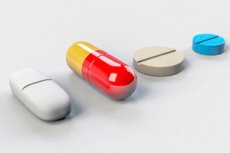What is a "biologically active additive" in cosmetics?
Last reviewed: 19.10.2021

All iLive content is medically reviewed or fact checked to ensure as much factual accuracy as possible.
We have strict sourcing guidelines and only link to reputable media sites, academic research institutions and, whenever possible, medically peer reviewed studies. Note that the numbers in parentheses ([1], [2], etc.) are clickable links to these studies.
If you feel that any of our content is inaccurate, out-of-date, or otherwise questionable, please select it and press Ctrl + Enter.

In general, a compound is considered "biologically active" if it is capable of interfering with the vital activity of skin cells or being incorporated into the biochemical processes taking place in the extracellular matrix. But then what is it fundamentally different from the drug?
In an attempt to somehow distinguish between cosmetics and medicines, legislators came up with different criteria for separating the cosmetic from a pharmaceutical product. For example, it is suggested to consider cosmetics only agents whose action is limited to the stratum corneum.
If we limit the possibilities of cosmetic preparations in the stratum corneum, then no active additives in cosmetics will be needed - there will be enough elements that soften the upper layer of the skin (for the sake of fairness we say that most often the consumer deals with such cosmetic products). However, due to the hydrophobicity of the emollients, we can not exclude the possibility of penetration of these substances into the epidermis.
Blood vessels are located in the dermis, so the substance reaching the dermal layer has all the chances to get into the blood, which means that the requirements for its safety should be increased. In fact, the possibility of getting components of cosmetics in the blood should be taken into account in any case - the cream can be on the burn surface and open wounds, on mucous membranes and even swallow (for example, with kisses).
So, the main criterion for the inclusion of a component in a cosmetic product should be its absolute safety. As for biological activity and intensity of exposure, here, apparently, cosmetics will go further and further, despite all the limitations (evidence for this is a new class of cosmetic products that affect the dermis and subcutaneous fatty tissue).
Active additives can be divided into three main groups: deficit-fillers - substances that the skin needs; protectors - protect the skin from harmful factors; modulators - change the speed and intensity of various physiological processes in the skin.

